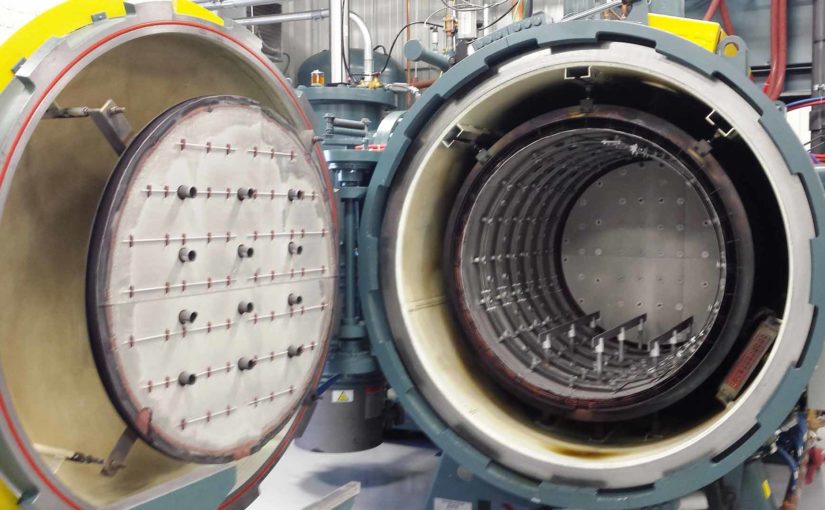When experiencing quality issues with parts treated in a vacuum furnace, such as discoloration, inclusions or cracks, it can be difficult to determine the root cause of the problem. A malfunctioning vacuum furnace or virtual leaks can quickly become a costly endeavor for manufacturers due to rework, scrap and/or recalls on products they treat. Troubleshooting signs of quality defects through maintenance, audits and the utilization of various tools can offer a solution.
Issues such as discoloration, surface defects, cracks and failure to meet quenching requirements and/or customer specifications, may be signs of impurities within the furnace atmosphere. Since these impurities can be minute and difficult to trace, Rozalia Papp, Principal Application Engineer with hands-on experience in aerospace vacuum heat treating for Airgas, an Air Liquide company suggests taking a closer look.“Because these critical parts are being treated in a vacuum, extremely sensitive equipment like RGA are needed to determine the slightest changes to the furnace that may affect the quality of the finished product,” said Papp.
Ensure vacuum furnace quality with routine checkups & industry-specific accreditations
Regular maintenance and audits can keep your vacuum furnace running smoothly. However, if the quality does become a concern, it could be an indication that there are underlying problems in the vacuum treatment process. In addition to quality issues, another telltale sign that your furnace is not working optimally is when the treatment process does not meet industry regulations set for manufacturers. In the aerospace industry, for example, manufacturing processes and products must pass audits performed by the Nadcap Accreditation Program, which was created by the Performance Review Institute. Nadcap is a cooperative industry effort of all aerospace primes to improve standards, while reducing costs, through the aerospace and defence industries. Nadcap audits for special processes such as Heat Treatment, identify and rectify deviations from industry standards, which can include furnace atmosphere/low vacuum quality.
Vacuum furnace is fine, but quality still isn’t. Now what?
If regular diagnostic tests and audits determine that the furnace is working correctly, but you are still experiencing quality problems with your parts during heat treatment cycles, Rozalia Papp, Principal Application Engineer with hands-on experience in aerospace vacuum heat treating for Airgas, an Air Liquide company, recommends utilizing one or more of the following devices:
- Oxygen ppm analyzer—An oxygen analyzer can detect trace amounts of oxygen in the incoming industrial gas that may be causing parts to oxidize during the treatment process.
- Dew point analyzer—A dew point analyzer can detect out of spec water vapor within the incoming gases that cause discoloration.
- Helium Leak Detector– A Helium leak detector can identify small leaks on your furnace at valves, connections, doors, etc.
- Residual gas analyzer (RGA)—An RGA can detect impurities within a vacuum furnace at the atomic level. It provides a real-time sample analysis of the atmosphere inside a vacuum furnace that allows for the identification of potential contaminants (most common: oxygen, water, pump oil backfill, depleted chemical components from parts and furnace walls, etc.). The real-time analysis can show what the contaminant is and when it becomes an issue during the treatment cycle. The RGA can also detect virtual leaks, which are hidden leaks that would otherwise go undetected.
If there are no outside leaks detected on the vacuum furnace and incoming industrial gas quality meets specification requirements but the quality of treated parts is not acceptable, only the RGA is capable of diagnosing root-cause.
Seek support from your suppliers
If issues persist, many manufacturers look to their suppliers for answers, as the assumed problem may be a result of impurities in supplied gases. A reliable supply partner has an in-depth understanding of the aerospace industry requirements such as AMS2750E/F, troubleshooting furnaces, the parts and materials treated in the furnace and the industrial gases used. A reliable partner can make a significant difference in helping solve your quality issues by providing diagnostic troubleshooting tools and informed solutions.
Connect with an Airgas heat treatment expert to learn more about how an Airgas residual gas analyzer can help you detect impurities in your vacuum furnace.
